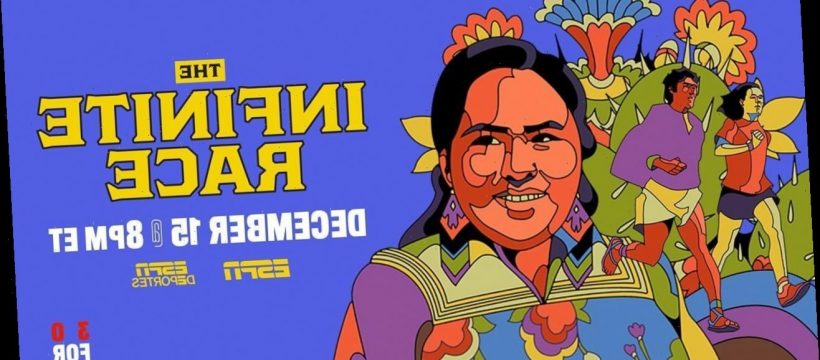MEXICO CITY — The long-distance running feats of the Tarahumara community in northern Mexico are well documented, yet little else is known to the outside world about the deeply held historical and cultural traditions motivating them to engage in the practice.
Those mysteries become more tantalizing because of the innate difficulty reaching Tarahumara towns, most of which are shielded within the Sierra Madre mountains that roll down the Mexican Pacific coast. For The Infinite Race — the latest documentary in the 30 for 30 series, airing Tuesday on ESPN and ESPN Deportes — director Bernardo Ruiz and his crew made it their mission to access these seldom-seen spots and tell the story of an intrinsic relationship between a community and its talent for running.
“To get to those isolated communities — it’s a challenge, because you have to walk or even climb in certain spots,” Ruiz told ESPN Deportes’ Fernando Palomo. “But I can tell you it’s one of the most beautiful places I’ve known in the entire world.”
It was in 2009 when Christopher McDougall’s best-selling book “Born To Run: A Hidden Tribe, Superathletes, and the Greatest Race the World Has Never Seen,” launched a fascination with the Tarahumaras. Tribe members ability to run distances of over 100 miles regularly, eschewing running shoes for thin sandals or even barefoot while doing so, raised eyebrows. The author’s hypothesis that running shoes caused injuries and poor form for runners who did not adhere to the Tarahumaras’ more basic apparel caused a short-lived frenzy of footwear designed to mimic the reduced cushion the tribe is known for using when running their ultramarathons.
While McDougall’s book introduced most of the world to the Tarahumaras, the unexpected allure it created came with an unintended consequence when runners from around the world flocked to the remote towns explored more than a decade later in Ruiz’s film.
“[It’s] an uncomfortable topic, the culture shock between foreign runners who come from the United States and Europe,” Ruiz said.
In essence, the issue lies in the overall reluctance by Tarahumara runners to join competitions unless absolutely necessary. The Infinite Race makes the case that running is a way of life, a necessary skill developed for survival — not a talent designed to be exploited for gain outside of the tight-knit society.
For centuries, the Tarahumaras’ ability to run, coupled with their living spaces being nestled in the Copper Canyons of Chihuahua, has meant a chance to willfully isolate themselves from the outside world for as long as they see fit — first from the Spaniards, then from the Mexican society that governs the land they live on.
“That comes from a tradition dating back to before the Spanish conquest,” Ruiz said. “Running has always been a form of resistance.”
Instead of adapting to the outside world, the tribe’s main sporting pursuits lie in the practice of rarajipari, a game that combines distance running with the handling of a wooden ball over the course of many kilometers. Games can last for days and end when one team or competitor reaches the agreed destination first. The game has recently transcended the Mexican border, making its competitive U.S. debut.
The aforementioned resistance can also explain why Tarahumara runners have yet to break through on the international stage in competitions such as the Olympics. In Ruiz’s experience, that shyness comes coupled with Mexico’s apparent lack of interest in developing talents.
Mexico has long had a tradition of elite competitors in long-distance athletics (Maria Guadalupe Gonzalez won the silver medal at the 2016 Olympics for the 20k walk event). Despite this, the country has not had a Tarahumara competitor make waves for winning an international event since Tomas Zafiro won gold in the 10k race at the 1926 Central American and Caribbean Games. Later that year, Zafiro ran for more than 100 kilometers, from Pachuca to Mexico City, in a feat dubbed at the time as “one of the more remarkable running performances in sporting history.”
Even if any Tarahumara runners potentially express an interest in high-level racing, there are key factors missing from the equation in order to move them from the Sierra Madre mountains and onto pavement and tracks, much less standing on podiums.
“There is a new generation of Tarahumara runners who have their eye on bigger competitions and the highest level,” Ruiz said. “But they need infrastructure and coaching. There’s no investment being made.”
At the moment, however, most competitors from the tribe enter races for a simpler, more pressing reason: survival. Poverty is rampant among Tarahumara communities, and violence stemming from drug cartels active in the region place an even bigger strain on the fragile situation. In Mexico and abroad, runners are now entering the fold as a way to provide for entire families.
According to the United Nations Development Programme, up to 100,000 Tarahumara men and women live in poverty due to various factors including crop death from climate change, cartel violence and the depletion of natural resources. The issues become a central piece of The Infinite Race.
“If certain members of the community participate [in races], it’s because they need the winnings, the money or the prizes,” Ruiz said. “They do it out of need and not for an innate desire to participate in sports.”
Despite the challenges that have pushed the Tarahumaras to run beyond their usual reasons, Ruiz hopes the film highlights the traditions and the way of life that have captivated so many with the seemingly effortless prowess so many within the tribe display in their effort to resist — and thrive.
“Without heart, no athlete can win out,” Ruiz said. “Obviously, you need to develop technique and training to be a champion, but you can’t do anything without heart. And we’re trying to show where that heart comes from.”
Source: Read Full Article

